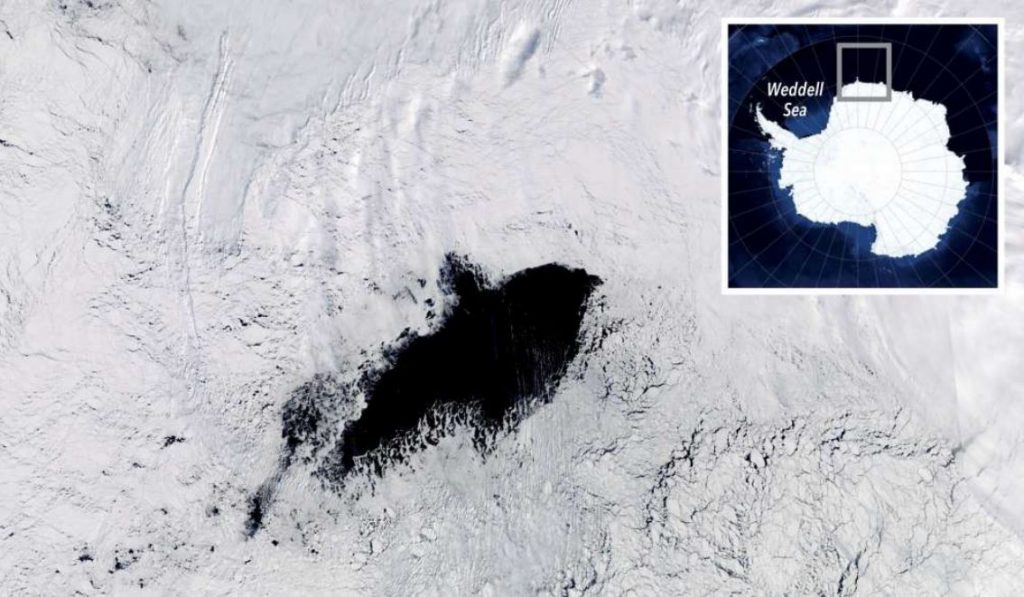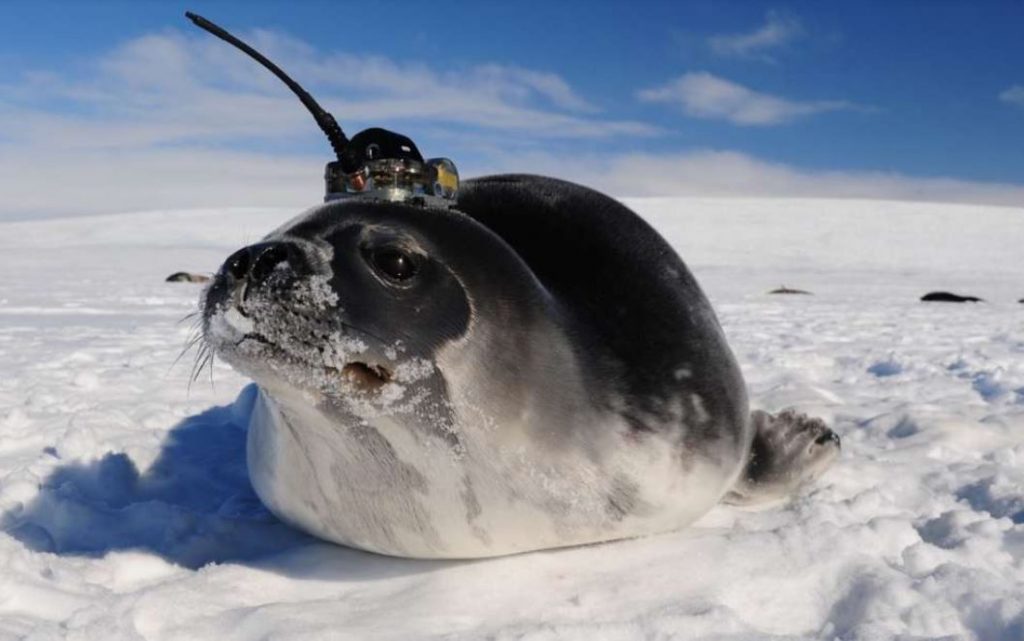Sometimes, a giant hole suddenly opens up in Antarctica’s sea ice during wintertime but, until now, scientists didn’t know why.
To try and explain this mysterious phenomenon, researchers used robotic drifters and seals loaded with scientific equipment to collect data on the circumstances that lead to these ice craters. A combination of intense, stormy weather patterns and ocean salinity were found to be responsible.

The key to the discovery was a hole that opened up in 2016 and 2017. Bigger holes had formed in years previously but this was the first time scientists had the chance to study the condition.
“We thought this large hole in the sea ice – known as a polynya – was something that was rare, maybe a process that had gone extinct. But the events in 2016 and 2017 forced us to re-evaluate that,” said lead author Ethan Campbell, a University of Washington (UW) doctoral student in oceanography.
“Observations show that the recent polynyas opened from a combination of factors – one being the unusual ocean conditions, and the other being a series of very intense storms that swirled over the Weddell Sea with almost hurricane-force winds.“
Mysterious holes
Smaller holes pop up relatively frequently on the surface of Antarctica’s Weddell Sea, but larger holes or polynyas (like the 2016-2017 gap) occur much less often.
The three biggest on record all took place in the seventies (1974, 1975, and 1976), shortly after the first satellites were launched. For three years in a row, a hole the size of New Zealand opened up as air temperatures plummeted far below freezing.
In August 2016, the hole – the first in decades – was 33,000 square kilometers (13,000 square miles) and lasted three weeks. In September and October 2017, a second manifested. This time it was 50,000 square kilometers (19,000 square miles).
What makes the polynyas
With data collected from weather stations, decades-worth of satellite images, and elephant seals carrying temporary satellite tags and sensors that transmitted to equipment onshore, the team were able to identify the conditions needed to make polynyas.
- Firstly, intense storms. This encourages a more powerful upward mixing in the eastern Weddell Sea, where an underwater mountain (Maud Rise) pushes dense seawater around it, creating a spinning vortex.
- Second, salty ocean conditions. The combination of salty ocean surfaces and strong winter storms can trigger an overturning circulation. This means warmer, saltier water from below gets pushed to the surface, where it cools and thus becomes denser and heavier than the water below. It sinks and is replaced by warmer water – a process that is repeated again, again, and again.
As a result, ice doesn’t get a chance to reform. So you are left with a hole.

According to the study authors, this is the first time scientists have shown that water is pulled from the surface to the depths of the ocean in smaller polynyas (like the one in 2016) as well as larger ones.
“This study shows that this polynya is actually caused by a number of factors that all have to line up for it to happen,” explained co-author Stephen Riser, a UW professor of oceanography. “In any given year you could have several of these things happen, but unless you get them all, then you don’t get a polynya.“
A very large hole in the ice is currently forming under West Antarctica. Scientists say covers two-thirds the footprint of Manhattan and stands almost 300 metres (984 ft) tall. That will make a giant polynya, when it reaches the surface, no?
[Nature, Eureka, IFL Science]











